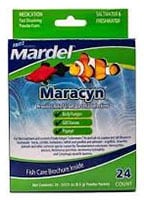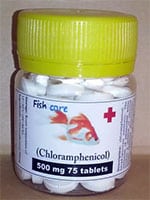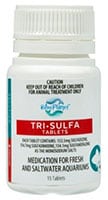
Fin rot can be treated using antibiotics, changing the water in the tank, cleaning the tank, moving discus into a separate tank, and many more processes that will be outlined in detail, but first, What is fin rot disease and what does it entail?
Table of Contents
- What Is A Discus Fin Rot Disease?
- Fin Rot Symptoms
- Discus Fin Rot Disease Details And Causes
- Discus Fin Rot Treatment Steps
- [STEP1] – Remove The Tank Water
- [STEP2] – Clean Your Tank
- [STEP3] – Remove Any Active Filter Carbon
- [STEP4] – Test Water Parameters
- [STEP5] – Put Back Discus
- [STEP6] – Use Aquarium Salt
- [STEP7] – Treat With Malachite Green
- [STEP8] – Treat With Methylene Blue
- [STEP9] – Use AntiBiotics
- [STEP10] – Treat With Anti Fungus And Fin Rot Medicine
- [STEP11] – Add An Airpump Or Airstone
- [STEP12] – Observe Discus On A Daily Basis
- [STEP13] – Get A Vet Advice
- Future Prevention Tips
- Related Questions
- Conclusion
What Is A Discus Fin Rot Disease?
Discus fin rot disease is a medical condition in which the fins of the discus appear to rot or decompose such that the fin begins to black or brown and sometimes even white. It comes about due to bacterial or fungal infection to the fish.
Fin Rot Symptoms
- The edges of the fin or tail begin to turn either black or brown.
- The base of the fin becomes swollen.
- The fin might become rotten, or huge lumps of it might begin to fall off.
- Fins appear to have white dots on them.
- The edges of the tail or the fins begin to look tattered.
- The fins might have holes through them.
Following these symptoms is a loss of appetite, less action, or movement as discus begins to sit at the bottom of the tank, not making any attempts to swim or do anything.
Discus Fin Rot Disease Details And Causes
The rot of the fin begins at the edge of the fin; it moves up from there, damaging any tissues in the fin in succession until it gets to the base of the fin, which might be deadly and unsalvageable.
Fin rot is a resultant effect of an infection relating to either bacteria or fungus.
- Bacterial Infection: When fin rot is caused by a bacterial infection, the fin of the discus will decompose or get rotten in a way that looks rough and raggedy.
- Fungal Infection: If the cause of fin rot is a fungal infection, the rotting of the fin will look even, and the edges of the fin will look white.
In some cases, fin rot could be as a result of both bacteria and fungi infections, and this could be brought about a number of reasons which include:
List of all possible causes
- Dirty tank.
- The poor condition of the water in the tank.
- Poor diet.
- Stress.
- Contact with already infected fishes.
- Injuries arising from improper handling of the Discus.
- Injuries arising from fights with other fishes in the same tank (nipping among fishes).
- Fin rot can even be a secondary disease brought on by another disease.
How Long Does Fin Rot Take To Heal?
The amount of time it will take for fin rot in the discus to heal is dependent on how severe the fin rot disease is. If the fin rot only affects the edges of the fins or tail, the discus will begin to recover its lost tissue and grow back its fins within a period of 4 to 5 days with appropriate care and treatment, which must begin as quickly as possible. However, if the fin rot disease has not affected most of the fin but has yet to get to the fin base, proper care and treatment should see the discus to good health in a few months.
When the condition worsens, it might be best to give in to euthanasia, so the discus does not have to swim or do anything more stressful.
Discus Fin Rot Treatment Steps
Bellow are full cure steps for the Discus fin rot disease:
[STEP1] – Remove The Tank Water
Transfer all your tank fishes into a separate hospital tank for a while, then empty the water tank of your main aquarium.
[STEP2] – Clean Your Tank
Perform the below complete tank cleaning tips.
- Check the filter for any impurities.
- Draw out the gravel at the bottom of the tank so you can get rid of any waste or debris that may have built up over time.
- Then clean up the tank with hot water (do not use soap).
- Immerse the accessories in the tank in hot water.
- Live plants should be immersed in moderately warm water after which you can take them out of the water to allow them dry.
- The gravels in the tank should be immersed in warm water and cleaned up with a vacuum cleaner to get rid of the gunk.
[STEP3] – Remove Any Active Filter Carbon
Get rid of the active carbon in the filter while you treat the discus.
[STEP4] – Test Water Parameters
After cleaning everything, put back everything, fill the tank with water.
Examine the conditions of the water in the tank and test for such things below for both the main aquarium and the hospital one at the beginning:
- The level of pH (~6.5 and Hardness 4.0)
- Water temperature must be between 80º – 86º Fahrenheit (around 29º – 34ºc).
- Use dechlorinated water, because most municipals add chlorine to their water to make it clean.



- Test ammonia using ammonia special test kit.
- There should be zero amounts of nitrites.
- The level of nitrates should be no more than 40ppm.
[STEP5] – Put Back Discus
Put back non-infected discus and other non-infected fishes to the main tank and leave the infected ones in the hospital tank.
[STEP6] – Use Aquarium Salt
Put aquarium salt for both the main and the hospital aquarium, this will aid the treatment and kill and harmful bacteria.
[STEP7] – Treat With Malachite Green
Treat the hospital tank with the malachite green by following the instructions in its box. this will be useful in killing microbes.

[STEP8] – Treat With Methylene Blue
Adding methylene blue to the aquarium will help to fight and to remove fungus from the discus fish as well as the tank (one drop per two gallons).

[STEP9] – Use AntiBiotics
Use one of the below antibiotics (API Erythromycin, Maracyn I and II, Chloramphenicol, and Tetracycline) to clean your tank and discus eventually from infections during the treatment period.





[STEP10] – Treat With Anti Fungus And Fin Rot Medicine
Use one of the antifungal & fin rot medicine below (Blue Planet’s Tri-Sulfa Tablets, Aqua One Fungus & Fin Rot Remedy, and API Melafix for fin rot) to treat your hospital tank with the infected discus fishes, remember to read carefully the relevant medicine instructions.



[STEP11] – Add An Airpump Or Airstone
When putting medicine into the tank or aquarium, make sure to use either an air pump or an airstone.
Most of the time, the medicine you put into the tank will suck up the oxygen in the water, and you might end up suffocating the discus, and that is why it is important that you provide an auxiliary pathway for the inflow of oxygen into the tank so that your discus can breathe properly.
[STEP12] – Observe Discus On A Daily Basis
To see if the disease has been treated. In a couple of weeks, the decomposed or rotten fins will begin to grow back, and then you will know that the treatment worked.
[STEP13] – Get A Vet Advice
If you found after the treatment plan that your sick discus fish with fin rote did not cure properly, the next and final step is to visit a specialized vet and ask for their advice for an alternative solution.
Future Prevention Tips
- To protect your discus fish from having fin rot, the major thing you should do is keep the water in the tank clean and the tank in the best possible condition.
- Feed your discus with little amounts of fresh food, high-quality ones, it should be done with eating in a matter of minutes.
- Clean up any gunk or litter in the tank.
- Make sure that the temperature of the water does not change.
- Test the water in the tank as often as possible. That way, you will be able to identify any problems in the tank on time before any bacteria or fungi develops to the point where it becomes deadly enough to affect the discus.
- Make sure that the tank is not overcrowded as this will encourage the build-up of waste at a fast rate as well as nipping among the fishes.
- Make sure that the species of fish you put in a particular tank are those that are friendly because if those species don’t relate, there will be fighting and fin nipping.
- Make sure to keenly watch over your discus to make sure that there are no alterations in their behavior, fins, body, tails, and appetite.
- Make sure that you treat the fin rot in your discus as quickly as you can to avoid further harm or damage.
Related Questions
Is Fin Rot Contagious To Humans?
Fin rot is not contagious to human beings, and so far, there have not been any reported cases of human beings contracting diseases because they were taking care of fishes who had diseases. Be that as it may, it is recommended that the hands be washed appropriately with disinfectants after touching the Discus or any other substances in the tank.
How Can You Tell If Fin Rot Is Getting Better?
In a few weeks, you will begin to notice that the fins of the discus are growing back.
Conclusion
Discus fin rot disease could either be as a result of a bacterial or fungal infection, which makes the fin or tail of the discus to become rotten or decomposed. It is caused by a number of things which include poor water conditions in the tank, waste build-up, and more. Some of the medicines used to treat fin rot include erythromycin, tetracycline, and Maracyn I and II.
To prevent, fin rot, you must ensure that the water in the tank must be clean, change the water regularly, and avoid overcrowding too many fishes in one tank. Fin rot disease cannot be transferred to humans but you must wash your hands after cleaning the tank. With proper care and medication, your Discus should be able to regenerate the tissues in its fin and grow it back in a few days or a few months depending on the severity of the rot.


Wow….. very healfull… thanks so much
most welcome.
Hi Firassameer,
Can i know do i add the medication for step 7 to step 10 in one go? Or do i do either one of the medication
Either one.